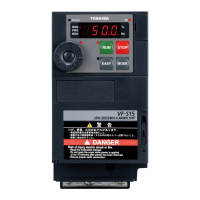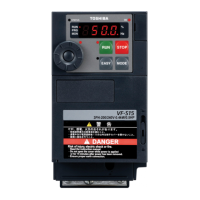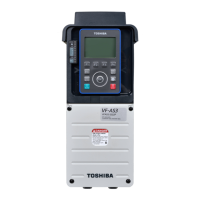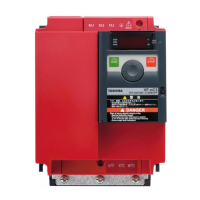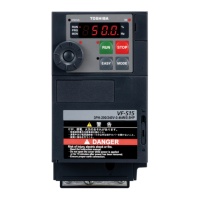E6581386
E-13
5
4) Vector control–increasing starting torque and achieving high-precision
operation.
Setting of V/f control mode selection = (Sensorless vector control)
Using sensorless vector control with a Toshiba standard motor will provide the highest torque at the lowest speed
ranges. The effects obtained through the use of sensorless vector control are described below.
(1) Provides large starting torque.
(2) Effective when stable operation is required to move smoothly up from the lowest speeds.
(3) Effective in elimination of load fluctuations caused by motor slippage.
(4) Effective in producing high motor torque at low speed.
Set to (sensorless vector control) to operate multiple motors of the same type in parallel or to operate a motor
with a two or more notches lower rating.
+Motor constant must be set.
The motor constant can be set in any of the following two ways:
1) Automatic setting
Enter the following information that is indicated on the motor nameplate, and then execute the auto-tuning 1
command (Set to , and then reset to .).
<Information indicated on motor nameplate>
(Base frequency), (Base frequency voltage), (Motor rated capacity), (Motor rated
current), (Motor rated rotational speed)
⇒ Refer to 6.22 selection 2.
2) Manual setting
Set each motor constant manually.
⇒ Refer to 6.22 selection 3.
5) Setting of V/f characteristic arbitrarily
Setting of V/f control mode selection = (V/f 5-point setting)
In this mode, the base frequency and the base frequency voltage for the V/f control need to be set to operate the
motor while switching a maximum of 5 different V/f characteristics.
[Parameter setting]
Title Function Adjustment range Default setting
V/f 5-point setting VF1 frequency ~ Hz
V/f 5-point setting VF1 voltage ~ %*
V/f 5-point setting VF2 frequency ~ Hz
V/f 5-point setting VF2 voltage ~ %*
V/f 5-point setting VF3 frequency ~ Hz
V/f 5-point setting VF3 voltage ~ %*
V/f 5-point setting VF4 frequency ~ Hz
V/f 5-point setting VF4 voltage ~ %*
V/f 5-point setting VF5 frequency ~ Hz
V/f 5-point setting VF5 voltage ~ %*
*100% adjustment value (200V class: 200V, 400V class: 400V)
Base frequency
voltage 1
Output voltage
[V]/[%]
Output frequency [Hz]
Base frequency 1
0
VF1
VF2
VF3
VF4
VF5
V/f 5-point setting
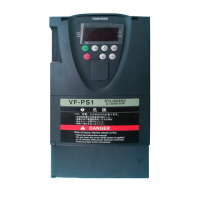
